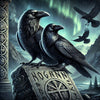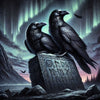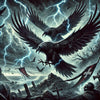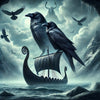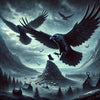Top 5 Viking symbols and their meaning
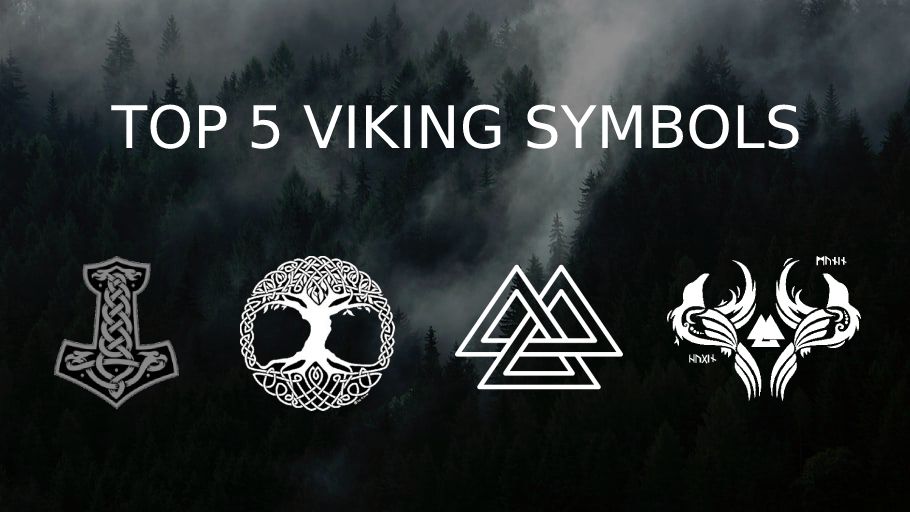
1. Thor’s Hammer - Mjölnir
Of all symbols seen in Norse mythology, Thor’s Hammer also known as Mjöllnir is probably the best known today and has gained a lot of popularity.
But behind this symbol is a lot of meaning and history.
But who is Thor? Thor is the Norse god of thunder, the sky, and agriculture and is chief of the gods.
He is the son of Odin and the husband of the fertility goddess Sif.Thor defends Asgard, the realm of the gods, and Midgard, the human realm.
The majority of the tales that feature Thor he is slaying giants or fighting his nemesis Jörmungandr, a monstrous snake who coils and twists itself around the world.
Like almost all of the Norse gods, Thor is doomed to die at Ragnarök, the end of the world and twilight of the gods, but falls only after killing the great serpent with his powerful hammer Mjollnir, dying to its poison.
The hammer was his primary weapon. It was no ordinary hammer; whenever Thor cast it at an enemy, it returned to his hands like a boomerang.
2. Yggdrasil - Tree Of Life
Why was the Yggdrasil the world tree so important in Norse culture and what exactly did it symbolize?
Yggdrasil is an eternal green ash tree, an immense tree that stood at the center of the cosmos and connected with its branches and roots to the various worlds and realms the Norse believed existed.Each realm hangs on its own branch, but if the tree should shake or fall, so will all the realms.
Yggdrasil’s fate was synonymous with that of the cosmos itself. Prophecy held that Ragnarok would be preceded by the trembling of Yggdrasil, an omen of the chaos to come.
3. Valknut - the slain warrior symbol
The Valknut is one of the most intriguing symbols that the Norse people have left behind.
The name comprises of two root words, ‘valr’ which means ‘slain warrior’ and ‘knut’, which is rather more easily decipherable as ‘knot’. Thus, the Valknut is the ‘Knot of the Slain Warrior’.
This ancient symbol is associated with the god Odin of Norse mythology. Odin was not only the ruler of all of the Norse gods but also the Norsemen’s god of war and of death.
Warriors who lost their lives in battle earned themselves a place in the grand hall overseen by Odin, Valhalla (Hall of the Slain) and became his adopted sons. In fact, ‘valr’ is the source of the English word ‘valour’ which we associate with great deeds of brave individuals.
4. Vegvisir – Runic Compass
The word Vegvisir means ‘wayfinder’ and ‘sign post’ and is meant to prevent the person carrying it from losing their way.
It is made of eight Viking rune staves featuring eight directions, symbolizing the many paths that can be taken.
“Carry this sign with you and you won't get lost in storms or bad weather, even in unfamiliar surroundings”
Many Viking ships bore the Vegivisir as a talisman to protect the ship and its crew from perishing at sea.
5. Huginn And Muninn – The twin ravens of Odin
In Norse mythology, Huginn and Muninn are Odin’s two ravens. Huginn is the old Norse word for “thought” and Muninn is the old Norse word for “memory”.
The two ravens sit on his (Odin’s) shoulders and whisper all the news which they see and hear into his ear, every morning at sunrise he sends them off to fly throughout all of the nine realms to gather information on what is happening. and by breakfast they return to Odin in Asgard and tell him everything that they have seen and heard.
The two ravens are depicted as complex, intellectual and wise. Their role of acting as Odin’s eyes, by flying around the world and bringing back accurate information for Odin, emphasizes their intelligence. In turn, it promotes Odin’s image as a god of wisdom and knowledge.





